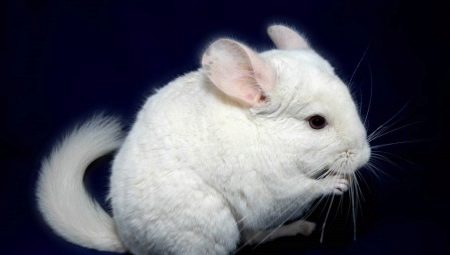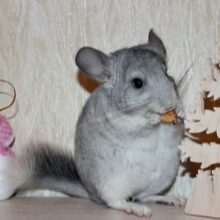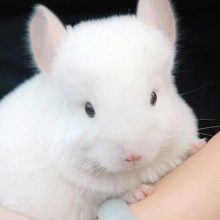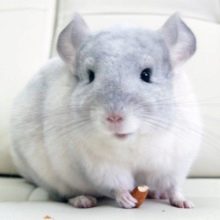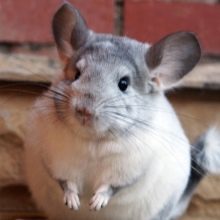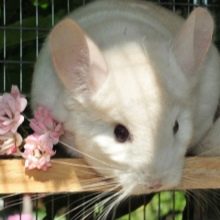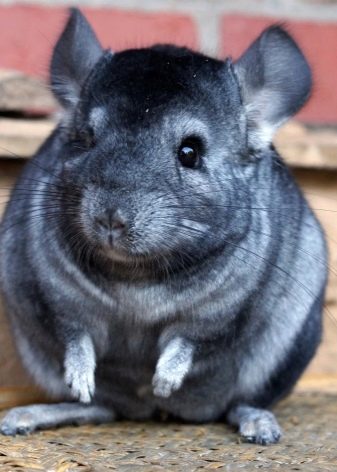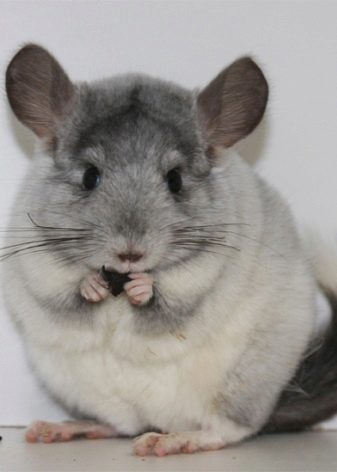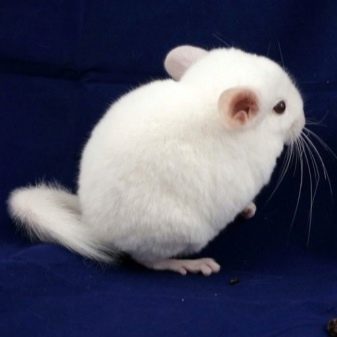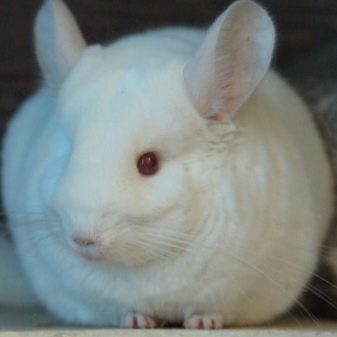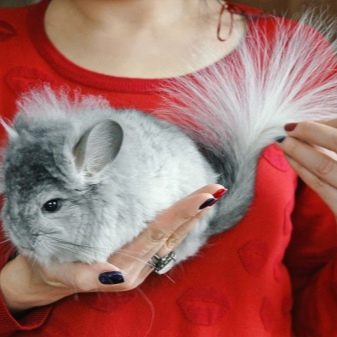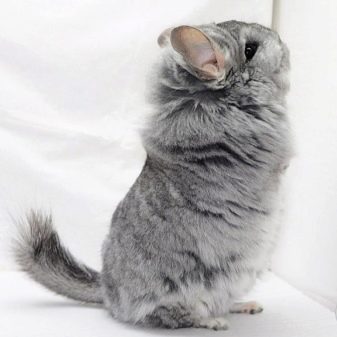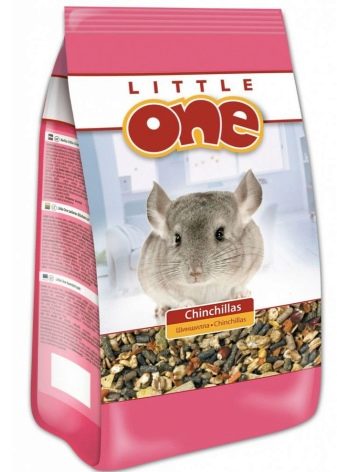In the wild, chinchilla is a inhabitant of the mountainous regions of South America with a cold and changeable climate. In order that this fur-bearing rodent could protect itself from low temperatures, nature rewarded it with a warm and thick fur coat. The color of the wild chinchilla is gray with a white belly, but among the pets you can find the cream, black and even sapphire color of the wool. The reason for this were the breeders of these cute rodents.
By crossing it was possible to get new amazing colors. Among them, white color deserves special attention, which is divided into many shades and ebb, each of them has a name and a characteristic.
White Wilson
This color - the ancestor of all other colors with white. In 1955, the American breeder Blythe Wilson brought out the first white chinchilla by crossing. Among carriers of fur coats of this color, completely snow-white varieties are rarely found, this form of coloring is called “predominant”. Crossing two white individuals together can lead to a decrease in the number of puppies in the litter and a decrease in their viability. Often you can find the combined types of color, among which the most popular are:
- silvery - the tips of the hairs of a white fur coat are colored silver, which creates an unusual smoky sheen;
- platinum - they look like silver, however, their main feature is the white tip of the tail;
- mosaic - there are gray spots of different size and localization on the skin, the clearer the contours of these spots, the more such color is valued;
- tricolor - one of the rare colors, on the skin there are spots of black, white and gray in different ratios.
In the platinum type of coloring, gray tint sometimes prevails, sometimes it can even look like absolutely gray and indicate that Wilson is white, in this case there will be only a white tail tip.
White pink
This color is obtained by crossing chinchillas coloring white Wilson and hetero beige. He, in turn, is also divided into 2 types: heterozygous and homozygous. Chinchilla white-pink heterozygous coloring has a white coat with beige spots of different size and localization. Sometimes only the tips of hairs are colored beige, which creates a sort of pinkish veil effect. The ears and nose are pink, but sometimes there are small beige spots on the ears.
Homozygous type of white-pink chinchilla are quite rare, due to which they are highly valued.. Animals differ from the heterozygous form in that they have a predominant white color in color, ears that are pure pink without spots, and also red eyes. Clearly limited beige and golden spots in this color are considered a rarity.
White violet
This is one of the most unusual and beautiful colors, obtained by crossing Wilson and violet. Pure purple color, in turn, is the result of a recessive mutation. It was withdrawn in 1960 in North Africa. Like Wilson, white violet can take on a silvery or mosaic shape. However, the place of gray or black in this color took a light purple hue.
More often it looks like a purple haze around the ears and tail, but sometimes we can meet a chinchilla with spots of such an unusual color.
The eyes of such a chinchilla are black with a blue tint, and the ears and nose are gray.
White velvet
The animals of this color have a white fur coat, gray ears and a gray "mask" on the face, sometimes they have a gray tail and gray "gloves" on the front paws. This coloring was obtained by crossing Wilson and black velvet.
The name of this color was due to the surprisingly thick and soft texture of fur - this genetic feature derived from the color of black velvet. This type of chinchilla coloration also has variations, among which are known velvet white-pink heterozygous and homozygous, as well as white velvet violet. Such color combinations are a great gift for any breeder and are highly valued.
White Californian or "white tail"
This unusual coloring appeared due to mutations simultaneously on several farms in California. Immediately, several puppies in the litter began to give birth to gray puppies, which with age became more and more white. Clear gray edging traced in the area of the ears and the base of the tail. The remaining areas could have been smoky or mosaic-like. but the main feature of this species is the snow-white tail. For this feature color got a second name.
White Lova
This coloring is among the rarest. It is distinguished by a white skin with a thick undercoat and cream veil, closest to the shade of champagne. The eyes of these chinchillas are bright red. With age, babies brighten, reaching maturity, get back their unusual creamy sheen. The Canadian breeder Robert Lowe discovered such coloring on his farm for the first time in 2002. The variety was named after him.
The cost of such chinchillas can reach several thousand dollars, so only experienced collectors-breeders can decide on the purchase of a small animal.
White ebony
Carriers of such a fur coat are similar to Wilsons with a mosaic type of coloring. There are two varieties of white ebony: they may have a white coat with black spots or, on the contrary, in the advantage of black color with bright snow-white markings. Their main difference is the clearly defined borders of the spots. Localization of spots can be on the head, ears, paws and sometimes on the sides. The eyes are dark, ears are light gray. Sometimes white spots may have a cream or beige tint. It is known that carriers of the “ebony” gene have a better and shinier coat.
This type of coloring also has various combinations, for example, white chocolate.
Albino
The presence of the albino gene is manifested by the absence of hair and skin pigment, so these chinchillas, like all albinos, are born with red eyes, have white wool and pale pink skin. Often, albino animals have health problems, such as visual impairment or total blindness. To obtain healthy offspring of carriers of this mutation, it is recommended to cross only with bright representatives of the breed. The offspring of such a union will also carry this gene, which can be transmitted through one or several generations.
White Royal Angora
This species appeared due to the crossing of the royal angora with the standard and the white Wilson. The skin can be absolutely snow-white, have gray spots or a smoky "veil", The main difference here is the thick undercoat and surprisingly soft fur coat. The eyes of such a chinchilla are dark, and the ears and nose can be gray.
Cultivation and care
Caring for a white chinchilla is no different from the content of animals of other colors. For the comfortable existence of a home chinchilla a spacious cage with a small house inside is necessary so that the animal can always hide and feel safe. Also it is better to equip the cage with a wheel, various tunnels and ladders - so the rodent will be able to realize their need for movement.
As a litter can be used special filler or simple sawdust. Among other things, in the cage you need to place a mineral stone, about which the chinchilla will grind teeth.
Nutrition for the chinchilla should be balanced. Since this animal is a herbivore, the easiest way to purchase a special food, which will become the basis of your pet's nutrition. In addition, in the chinchilla menu, you can from time to time add young shoots of wheat or oats, as well as dandelion, sorrel and plantain. For comfortable digestion, chinchillas need hay - it can be placed in a special wire feeder. In the summer, the ration of a home rodent should be enriched with fresh products; for this purpose, it is ideal:
- carrot;
- eggplants;
- potatoes;
- nuts;
- sunflower seeds;
- figs;
- apples;
- pears;
- grapes
One of the highlights in the care of a chinchilla is bathing. Since this animal has no sweat glands, it is contraindicated for him to swim in water. Chinchillas perform this hygienic procedure in the sand. To do this, you can purchase a special container and fill it with sand with antibacterial additives.
You can buy such a composition in a pet store - it should be small and homogeneous.
Why does a chinchilla bite?
Despite the sociability and friendly attitude towards people, the white chinchilla sometimes bites. This incident may have many causes, some of which are listed below.
- Acquaintance. As a rule, this is a light bite, which helps the animal to better remember your smell and get to know it better. Such bites are almost painless and do not cause bleeding. When the chinchilla examines you, it will not be necessary.
- Chance This can happen without malicious intent, for example, you fed the chinchilla with your hands, and she missed a little.
- Protest. This "bite" means "Do not do it!". So you are trying to take the animal against his will or too rude. For example, a chinchilla was asleep, but you suddenly decided to show it in all its glory to a newly arrived guest.
- Fear. In this case, the pet bites to protect - so he feels dangerous. Perhaps the animal does not trust you.
- Disease. No one likes being touched during an illness. Pay attention to the general condition of the pet - if he is sedentary and apathetic, most likely he is sick.
- Another child. Kids do not quite understand what is good and what is bad. Trying the world by heart, they can try you.
- The effect of "communal". If more than one individual lives in a cage, this may not be to everyone’s liking. In the chinchilla neighborhood can cause stress, well, in a state of stress, everyone can bite.
- Just bad. It happens that it is a character trait. If all other possible causes are excluded, it remains to accept and accept the wickedness as it is. Naturally, such a beast should be handled with extreme caution, and if it works out - try to wean it off from biting.
To avoid such behavior, try to communicate more often with the pet, feed it with delicacies from hands, treat the chinchilla carefully and respectfully. Do not encourage bad behavior - right after the bite, do not give the beast food, but wait until the time passes.
See how to grow white chinchillas in the next video.
